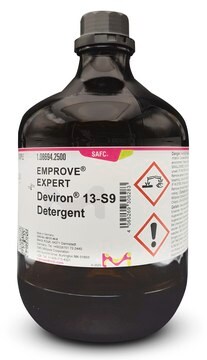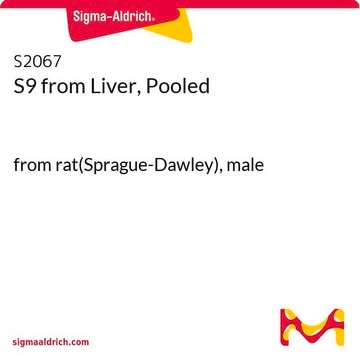A1420
Ames′ Medium
With L-glutamine, without sodium bicarbonate, powder, suitable for cell culture
About This Item
Productos recomendados
Nivel de calidad
formulario
powder
técnicas
cell culture | mammalian: suitable
componentes
glucose: 1.081 g/L (Dextro)
NaHCO3: no
L-glutamine: 0.073 g/L
Condiciones de envío
ambient
temp. de almacenamiento
2-8°C
Descripción general
Aplicación
Cantidad
Reconstitución
Código de clase de almacenamiento
11 - Combustible Solids
Clase de riesgo para el agua (WGK)
WGK 2
Punto de inflamabilidad (°F)
Not applicable
Punto de inflamabilidad (°C)
Not applicable
Certificados de análisis (COA)
Busque Certificados de análisis (COA) introduciendo el número de lote del producto. Los números de lote se encuentran en la etiqueta del producto después de las palabras «Lot» o «Batch»
¿Ya tiene este producto?
Encuentre la documentación para los productos que ha comprado recientemente en la Biblioteca de documentos.
Los clientes también vieron
Protocolos
Powdered media and salt mixtures are extremely hygroscopic and should be protected from atmospheric moisture.
Nuestro equipo de científicos tiene experiencia en todas las áreas de investigación: Ciencias de la vida, Ciencia de los materiales, Síntesis química, Cromatografía, Analítica y muchas otras.
Póngase en contacto con el Servicio técnico











